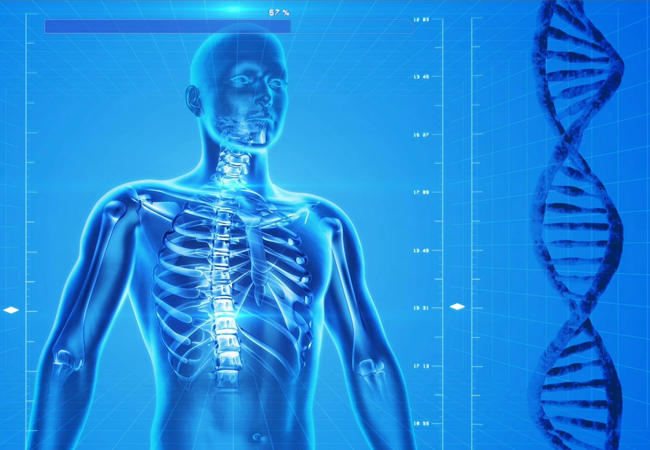ZINC, AN ESSENTIAL TRACE ELEMENT FOR IMMUNITY
Zinc is a trace element, present in very small quantities in the human body: in muscles (65%), bones (20%), liver and skin. Zinc plays an important role in many biological processes. It is essential for growth, protein metabolism, immune function, tissue maintenance and wound healing1.
Zinc is also involved in neurological and reproductive functions.
How is zinc absorbed by the body?
Zinc is absorbed in the small intestine and mainly in the jejunum, thanks to a transporter secreted by the pancreas (ZBF or zinc building factor). Its bioavailability can vary a lot, e.g. 10% in vegetarians and 35-40% in mixed Western diets.2
Zinc absorption seems to decrease with age, by phytates and plant fibers or alcohol. There is also copper-zinc and iron-zinc competition. If zinc intakes increases, iron absorption decreases.
You can find zinc in many foods: shellfish, red meat, nuts, legumes. However, its concentration and bioavailability can vary considerably depending on the food and age. However, zinc absorption can be enhanced by protein, lactose, glucose and essential fatty acids.1,2
Study on zinc deficiency
Researchers from Oregon State University conducted an in vitro and in vivo study on rodents with the aim of examining the effects of zinc deficiency on cellular immune activation and on the epigenetic mechanisms that promote inflammation. This study showed that a zinc deficiency would induce an inflammatory response by causing abnormal activation of immune cells and a modification of the expression patterns of genes involved in immune function. Thus, zinc deficiency could lead to immune dysfunction and promote systemic inflammation. This work could be of particular interest to the elderly since age-related immune defects, including chronic inflammation, coincide with declining zinc status.
Zinc deficiency leads to immune dysfunction
and promotes systemic inflammation
According to the European Food Safety Authority (EFSA), there is a causal relationship between dietary zinc intake and normal immune system function. Zinc is important for fighting bacterial and viral infections, including influenza viruses and coronaviruses. It is an essential cofactor in the metabolism of polyunsaturated fatty acids and prostaglandins, which are involved in many physiological processes and are part of the lipid mediators of inflammation.
In the general population, recommended daily zinc intakes vary between 8 mg for women and 11 mg for men. While major zinc deficiencies are rare, mild to moderate deficiencies are more frequent and could affect up to a third of the world’s population3. The effects of zinc deficiency on the body are variable: skin problems, scarring difficulties, hair loss, reproductive problems, and increased susceptibility to infections.
Micro-encapsulated zinc
Zinc is a mineral that is more or less well absorbed depending on the diet. The “coating” technique allows the encapsulation of an active ingredient by vegetable fats. It protects zinc from oxidation and improves its assimilation in the body.
How does coating protect zinc from degradation?
Zinc must be supplied to the body on a daily basis because, unlike iron, the body does not know how to store it. It is a powerful antioxidant: it is involved in the activity of an enzyme that plays a role in the fight against ageing, oxidative stress and age-related diseases: superoxide dismutase.4
Zinc is an element sensitive to oxidation. It is also pro-oxidant, to a lesser extent than copper, chromium or iron. It is therefore important to protect zinc from oxidation before it is absorbed by the body. Coating provides optimal protection of the active ingredients against oxidation, light, temperature and hygroscopy. In this form, zinc is properly protected.
How does the coating affect the absorption and bioavailability of zinc sulphate?
Zinc is marketed in the form of salts. The zinc sulphate offered by Seanova is used as a dietary supplement in order to avoid deficiencies. Zinc sulphate is one of the most soluble forms of zinc5. The zinc salt – vegetable fats combination makes it insoluble in water.
During the digestion process, the breakdown of lipids begins in the intestine6. The combination of zinc sulphate with vegetable fats allows it to pass through the stomach’s acid barrier. Encapsulation also allows a later assimilation at the intestinal level. The better absorption of the mineral is a benefit for the body.
Sources
1. Samuel Kogan, Aditya Sood, Mark S. Granick, « Zinc and Wound Healing: A Review of Zinc Physiology and Clinical
Applications ». Wounds Research. 2017;29(4):102–106.
2. Jacqueline Absolonne, Abécédaire de la nutrition fonctionnelle, Editions EDS de Sante, 2003.
3.World Health Organization. (2002). Rapport sur la santé dans le monde : 2002 : réduire les risques et promouvoir une vie saine. Genève
4. Juliette Pouyat « Le zinc ». La Nutrition. 2017.
5. Allen, L. H. « Zinc and micronutrient supplements for children ». The American Journal of Clinical Nutrition 1998 ; (2):495S-498S.
6. Les fondamentaux de la pathologie digestive © CDU-HGE. Elesevier-Masson. 2014 (12) : 4-5.
This post is also available in: French





